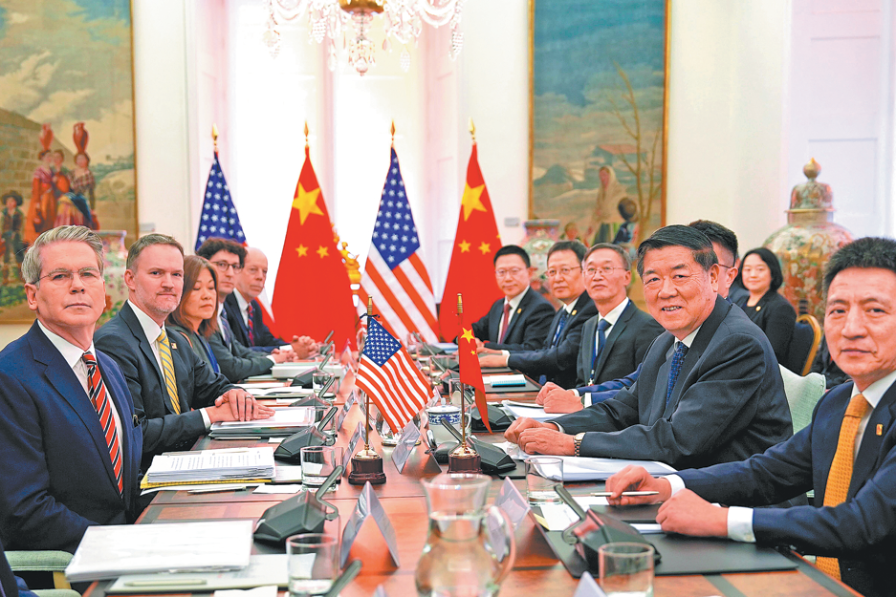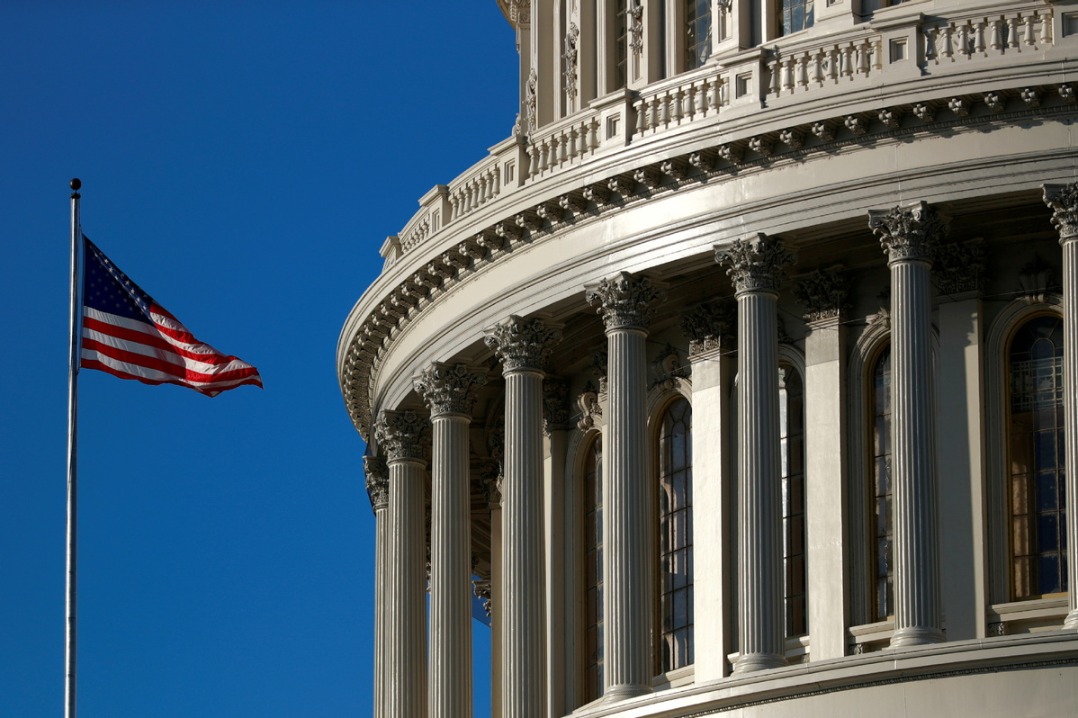Serious Discrimination Against and Cruel Treatment of Immigrants Fully Expose Hypocrisy of 'US-Style Human Rights'

2. Many Reasons Lead to the Overflowing Xenophobia in US Immigration Policies
(1) The Supreme Court of the United States (SCOTUS) Offers Its Endorsement for the Xenophobia Existing in US Immigration Policies
The founders of the country recognized that in order to consolidate the achievements of the founding of the country and to expand the territory of the country, the government had to rely on population growth and abundant labor resources brought by immigrants. Back then, for the sake of national interests, the United States encouraged immigration, but at the same time, they were concerned about how immigration might affect US political life. Two conflicting mentalities, namely intolerance and doubt concerning the ethnic characteristics of immigrants, and the ideal of and self-confidence in assimilating immigrants, have been embodied throughout the development history of the US immigration system. They have also become the theoretical basis for the US government's immigration policies featuring assimilation or exclusion of immigrants.
Upon entering the 19th century, as more and more immigrants came to the United States, the era of free immigration was ended and another era featuring restriction on and exclusion of immigrants began. In the late 19th century, in order to justify the "Chinese Exclusion Act", an unfamous racial discrimination law, the SCOTUS for the first time had linked "immigrants that could not be assimilated" with "invasion" that threatened US security and created the doctrine of "plenary power" in the context of immigration law. In the "Chinese Exclusion Case" of 1889, the SCOTUS ruled that if the government of the United States considers the presence of foreigners of a different race who will not assimilate with the US, to be dangerous to its peace and security, the foreigners are excluded to not to be stayed. And the determination of the government is conclusive upon the judiciary. In 1892, the SCOTUS further clarified the "plenary power" doctrine in judging the case of "Nishimura Ekiu v. United States". Since then, with the "plenary power" doctrine, US federal immigration statutes and policies have begun blatantly embracing xenophobia, constantly discriminating against and excluding certain races, without being reviewed for compliance with substantive constitutional restraints by the Court.
In 2018, the SCOTUS used the "plenary power" doctrine once again to endorse the current US government's "travel ban" for specific countries. On January 27, 2017, the US government issued an executive order prohibiting citizens of seven countries, namely Iran, Iraq, Libya, Somalia, Sudan, Syria, and Yemen, from entering the United States. As the seven countries covered by the ban are majority-Muslim countries, the executive order is also widely interpreted as a "Muslim ban". This ban has sparked widespread protests in the United States and around the world. Although the content of the travel ban has been modified twice by the US government, it is still unfairly and discriminately targeting Muslim countries. The state of Hawaii has filed a lawsuit in federal court over the travel ban, accusing the ban of violating the US Constitution and immigration laws. In June 2018, the SCOTUS ruled ruling in a 5-4 decision split along ideological lines that upheld the validity of the travel ban as within the President's powers. The verdict has caused much controversy in the United States. As Youm7(or Seventh Day), a daily of Egypt, commented, many Middle East countries expressed disappointment and anger when the US government's travel ban was in full effect with the consent of the SCOTUS.
Through a series of judicial practice and legal precedents, the SCOTUS has turned the federal government's "plenary power" in handling immigration affairs into a tool of national defense, which can be used to resist the "invasion" of foreign immigrants. Besides, this doctrine originated in the right of exclusion of aliens who are outside the United States, has gradually extended to the right of deportation of aliens who are within the United States. With the endorsement of the SCOTUS, the federal government's power in the field of immigration has become a power reserved exclusively for the "political department" and separated from constitutional reviews. This is the systemic root for the existence, continuation, and even rampancy of xenophobia in US immigration policies.
(2) Xenophobia is Pushed to the Extreme by the Increasing Mainstreaming of the Anti-Immigration Ideology
At present, the anti-immigrant ideology has been increasingly mainstreamed in the political ecology of the United States. On August 8, 2019, a post on the website of the Anti-Defamation League (ADL) pointed out that white supremacists in the United States believe that they are under siege by immigrants and that as demographic changes and the increase in immigration are destroying the white "Anglo-Saxon" Protestant culture and turning the white people into an ethnic minority, it is necessary to take quick action to stop these ethnic and cultural changes.
Anti-immigration policies have been used as a tool to alienate or draw voters into the US political competition, further pushing xenophobia to the extreme. High-ranking political officials of the United States played the "immigration card". In order to gain political benefits, they encouraged paranoia, xenophobia, and racism by demonizing immigrants in front of the public and demonstrating a negative attitude toward immigration. On November 28, 2018, 10 UN human rights experts, including the Chairman and Rapporteur of the Working Group on Arbitrary Detention of the UN Human Rights Council, the Special Rapporteur on contemporary forms of racial discrimination, the Special Rapporteur on torture, and the Special Rapporteur on trafficking in persons, issued a joint statement, criticizing high-level officials of the US government for violating international human rights standards, making racist and xenophobic remarks and actions, stigmatizing immigrants and refugees, and treating immigrants and refugees as criminals and "infectious diseases", thereby fostering intolerance, racial hatred, and xenophobia and creating a hostile social atmosphere toward non-whites, etc.
Stigmatizing immigrants has fueled xenophobia and further exacerbated the US people's anxiety toward immigrants. A Gallup poll issued in July 2018 showed that nearly a quarter of US respondents regarded immigration as the number one problem in the United States. The website of USA Today pointed out on August 8, 2019, that the constant demonization of immigration has created an atmosphere in which white supremacists have an excuse to turn their hate speech against immigrants into violent actions.
(3) The Unilateral Immigration Policy of the United States has Caused a Deteriorating Situation of Illegal Immigration in the Border Areas
In 2018, thousands of people from Central America left their countries in droves to reach southern Mexico, hoping to go north and eventually enter the United States. This constituted a wave of immigration across the southwestern border of the United States. Immigration flows from Central America are long-existing phenomena, and there were many such waves of immigration in history. The fundamental cause of these phenomena is the long-standing imbalance in regional development in America, which makes these Central American immigrants want to escape the threats to their survival and personal safety in their own countries, such as poverty, unemployment, hunger, and violent crimes. The website of the British newspaper The Guardian pointed out on December 19, 2018, that the destabilization in the 1980s-which was very much part of the US cold war effort-was incredibly important in creating the kind of political and economic conditions that exist in those countries today, therefore the Central American immigrants moving towards the US border are trying to escape a "hell" that the US has helped to create.
To prevent the Central American migration flows from moving northward and entering the United States, the US government adopted a series of tough policies for the border area from 2017 to 2019, and implemented rigorous law-enforcement actions featuring punitive measures. The US President has declared a state of emergency across the border, and billions of dollars have been transferred from national defense and other projects to build a border wall. The US government has also significantly reduced the number of qualifications for granting asylum to Central American refugees, rejecting applications for asylum from victims of gang or domestic violence. To prevent the entry of Central American immigrants, thousands of active-duty US military personnel and members of the National Guard have been sent to the southern border area of the United States. They have habitually resorted to violent law-enforcement measures and treated the asylum-seeking immigrants cruelly in the US-Mexico border areas. Unfortunately, these punitive measures adopted by the US government to quickly resolve the issue have produced the opposite effect. Instead of preventing immigration flows, the border area is facing a more severe situation. More than 300,000 illegal immigrants were arrested on the southwest US border in 2017 alone, and in 2019, this figure surged to about 850,000.The sharp increase in the number of arrests of illegal immigrants indicates that the security situation at the US border has deteriorated significantly within a short period of time, and that a vicious cycle has been formed between the rigorous, xenophobic immigration policies and the severe immigration situation.
In the meantime, the US government is trying every way to push its immigration-related responsibilities on to its neighboring countries. The US government has implemented a "Remain in Mexico" policy that requires asylum-seekers to stay in Mexico for months or even longer, awaiting a decision on asylum or repatriation by the United States. In the meantime, the United States has forced the Mexican government to agree to accept illegal immigrants in the United States by threatening to increase tariffs. The Intercept website reported on July 14, 2019, that the "Remain in Mexico" policy was not protecting immigrants but putting them at greater risk, as these immigrants' lives and security were seriously threatened when they were forced to stay in border cities for months, where rape, abduction, murder, and other crimes occur most frequently. Since the outbreak of the COVID-19 pandemic in 2020, the US government has adopted a "beggar-my-neighbor" policy. Disregarding the spread of the pandemic, it has forcibly repatriated a large number of illegal immigrants, which has increased the risk of the spread of COVID-19 in Central American countries. Such an irresponsible practice of passing on the risk to other countries points to a go-it-alone "unilateralism" on the part of the United States.
The US government's strong punitive measures and unilateralism on immigration issues cannot help solve the root cause of illegal immigration. Instead, they will worsen the imbalance in the development between the United States and Mexico and other countries where immigrants come from. This will further worsen the immigration situation in the border areas and make the illegal immigration issue fall into a longterm quagmire.


































